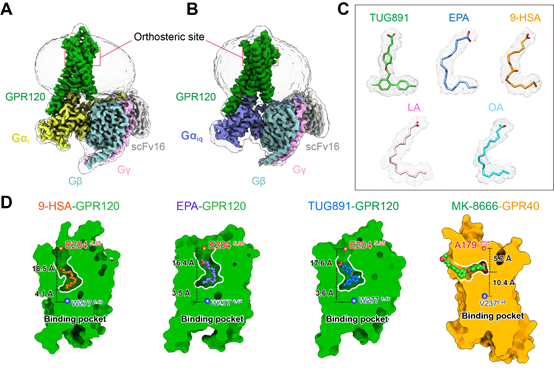

"Eat more fish, be smart!"
I wonder if when you were a child, did you often listen to such "persuasion" from the elders in your family?
Now, scientists are here to tell you that eating more fish is indeed good for the human body.

team photo
In the growth and development of human beings, a large amount of nutrients are needed, some of which can be synthesized in the body, while others need to be supplemented outside the body. Omega-3 fatty acids are a kind of nutrients that cannot be synthesized by the human body, but are very beneficial to the body. Clinical studies have shown that taking such fatty acids can strengthen the brain, regulate blood pressure, reduce inflammation and even lower fat and other health effects. Fish, especially deep-sea fish, are rich in Omega-3 fatty acids.
Since it is beneficial to human health, Omega-3 fatty acids have naturally become the focus of scientists. The amazing thing is that the excessive intake of many other types of fatty acids can lead to obesity, diabetes, high blood pressure and other metabolic diseases, while the difference between Omega-3 fatty acids and them is very subtle, and it can be said that the difference is a thousand miles away. . Then, revealing the fundamental mechanism behind the differences in the effects of different fatty acids has become an important scientific problem.
Recently, the team of Professor Zhang Yan from Zhejiang University School of Medicine and Liangzhu Laboratory and the team of Professor Sun Jinpeng, Feng Shiqing and Professor Yu Xiao from Shandong University have successfully analyzed 4 different types of Fatty acids and the synthetic agonist TUG891 respectively stimulated the Omega-3 fish oil receptor to form a fine three-dimensional structure of the signal transduction complex, which elaborated in detail the pattern of the Omega-3 fish oil receptor recognizing unsaturated fatty acids modified by different double bonds, and then revealed Mechanisms by which different fatty acids trigger specific downstream signaling profiles of omega-3 fish oil receptors.
This achievement was published online in the top international journal "Science" on March 3, Beijing time.
"Blind box" waiting to be opened
In the human body, free fatty acids are key sources of energy and important signaling molecules that regulate many metabolic processes. Fatty acids are divided into saturated fatty acids and unsaturated fatty acids, and are divided into monounsaturated fatty acids (containing 1 double bond) and polyunsaturated fatty acids (containing more than 1 double bond) due to the difference in double bonds.
Omega-3 fatty acids in fish oil are polyunsaturated fatty acids, including small molecules such as eicosapentaenoic acid (EPA) and docosahexaenoic acid (DHA). Because of the beneficial roles of omega-3 fatty acids in promoting health and reducing the risk of disease, scientists have been studying their structure, function and mechanism of action.
Previous studies have found that in order for Omega-3 fatty acids to function in the human body, a helper is needed - the Omega-3 fish oil receptor. Omega-3 fish oil receptor (GPR120, FFAR4) belongs to the largest membrane protein family G protein-coupled receptor (GPCR) family in the human body, and has various functions such as promoting insulin sensitization, stimulating GLP-1 secretion and controlling lipogenesis . It can recognize a variety of saturated and unsaturated long-chain fatty acids including Omega-3 fatty acids. After the receptor is activated, it can be coupled with a variety of downstream effectors, including various G proteins (Gs, Gi, Gq) and β-arrestin, etc., and then trigger the corresponding cellular responses and physiological effects. However, different fatty acids have different effects on activating Omega-3 fish oil receptors, and only certain unsaturated fatty acids are beneficial to the human body.
Because the structure of the GPCR signal transduction complex is very unstable, and the long-chain fatty acid molecules are very similar, it has been difficult to capture for a long time, let alone how to distinguish them. Scientists have not figured out how different fatty acids trigger different activation effects. That is to say, when the long-chain fatty acid as the key unlocks the Omega-3 fish oil receptor, it is like opening a "blind box", and we don't know what kind of response will be triggered next. To open the "blind box", you must have "golden eyes" and "diamonds". Professor Zhang Yan’s team has been focusing on the mechanism research of cell transmembrane signal transduction and the design of precise regulation methods, developed and established the GPCR structural pharmacology based on cryo-electron microscopy, and obtained the high-resolution cryo-electron microscope of the GPCR signal transduction complex for the first time in the world The three-dimensional structure analyzes the process of life receiving information, processing information and compiling information from the atomic level.
What is the mystery hidden in the Omega-3 fish oil receptor?

A, Overview of Omega-3 fish oil receptor signaling and related functions; B, Chemical structures of fatty acids with different degrees of saturation and the synthetic agonist TUG891.
Different keys open the same lock
To solve this mystery, it is necessary to answer a series of questions.
How do omega-3 fish oil receptors recognize different saturated and unsaturated fatty acids and synthetic compounds? Double bonds are ubiquitous in nature, do mammals have an established system for recognizing these double bond modifications? If it exists, the difference between single bond and double bond is so subtle, how to fine-tune the receptor protein and translate it into specific biological signal transduction?
To this end, Professor Zhang Yan's team and collaborators conducted research on Omega-3 fish oil receptors. The team selected 5 different fatty acids and synthetic compounds as ligands, and used Omega-3 fish oil receptors to recognize unsaturated fatty acids with different double bond modifications and their connection with Omega-3 fish oil receptor bias signals as the entry point for the research. point.

AB, cryo-EM structure of omega-3 fish oil receptor-Gi/Giq; C, electron microscope density of various ligands; D, ligand-binding pocket of Omega-3 fish oil receptor (green) and other fatty acid receptors (yellow ) comparison of ligand structural pockets.
With the help of cryo-electron microscopy facilities in Liangzhu Laboratory, the sample preparation and calculation methods were continuously optimized to overcome numerous obstacles, and after "seeing clearly" the different types of ligands of fish oil molecules, the scientific research team found that unsaturated fatty acids with different double bond modifications are all It can open the Omega-3 fish oil receptor, and the mystery of the different results is that single key and multi-key, such as the tooth pattern of different keys, open in different ways in the lock cylinder, so although the same lock is opened, it is difficult to walk in. But it is a different world.
Dr. Mao Chunyou, the first author of the paper from Run Run Shaw Hospital Affiliated to Zhejiang University School of Medicine, said: "When Omega-3 fish oil receptors respond to the signal stimulation of different ligands, they can mediate the signaling pathways of various downstream effector G proteins, and different G The protein plays a key role in mediating different functions downstream of the receptor." The researchers found that different unsaturated fatty acids, with different double bond arrangements, combined with specific combinations of aryl amino acids in Omega-3 fish oil receptors to produce π : π interactions, or specific hydrophobic interactions with other amino acids, which play an important role in determining downstream signaling profiles.

Distribution and function of aromatic residues involved in the recognition of fatty acid double bonds in Omega-3 fish oil receptors
parting ways secret
Opening the same lock with different keys opens up completely different worlds. How will it develop in the future? Through structural analysis, molecular dynamics simulations, and mutation screening, the research team further revealed the transmission pathway linking the conformational changes associated with ligand recognition in the ligand pocket and the recruitment of different effector G proteins.
Zhang Yan said that the compilation and processing of each signal is different. When receiving different signals, different instructions will be issued and different paths will be taken. For this reason, the research team has proved through functional experiments that the reason why Omega-3 fatty acids are beneficial is that an instruction has been added to allow the signal that might have gone in other directions to "turn around" and lead to a path that is beneficial to metabolism.
At present, corresponding health care products containing Omega-3 fatty acids have been developed in the market to promote children's intellectual development, help middle-aged and elderly people reduce blood fat and cholesterol, and prevent cardiovascular diseases. In the future, the Zhejiang University team will fully mobilize the advantages of interdisciplinary studies to carry out better "key" design. "Our team will also continue to decipher the secret weapon to regulate life and health, and hope that there will be more and better 'fish oil' and 'keys' in the near future", helping to open the door to longevity, health and happiness. " Zhang Yan said.


